Team:TU-Munich/HumanPractice/GMO
From 2013.igem.org
Risk-Benefit Analysis for genetically modified plants
Since genetically modified food is cultivated the general public is concerned about the ethical implications of this new technology and more importantly the possible dangers to human health and the environment. To address these public concerns we put together a comprehensional risk-benefit analysis to determine whether the negative public perception of GMO´s is reasonable or result of an ill-informed misconception.
Benefits
- Extensive testing regarding human health in comparison to traditional food which could prevent ingestion of high levels of mycotoxins, alkaloids and other noxious substances
- Higher yields through the introduction of resistances towards parasites and viruses
- Creating health beneficial functional food (additional vitamins, higher calorie density etc.)
- Eliminating allergens in highly allergenic foods to make them available for more consumers
- Increased agricultural acreage by making plants more resistant to certain atmospheric conditions
- Cheaper production costs resulting in cheaper prices for consumers
- Possible widespread distribution of therapeutic substances such as vaccines
- Reducing the use of pesticides which pose serious health concerns if ingested
Risks
- Unexpected gene interactions with genes other than the induced ones
- Increased cancer risk if transgenic plants have higher pesticide residues than wildtype ones
- Possibility of introducing a protein into the food which could act as a new allergen
- Chance of unwanted horizontal gene transfer
- Genetic manipulation of a specific organism may pose a threat to biodiversity
We have to add that the above mentioned risks and benefits of GMO´s do not regard distribution and marketing and we aimed to analyze only the scientific implications of this technology.
Further evaluation of the risks
Today science is already at a successful path in minimizing all possible risks associated with GMO food. The mentioned risks are only a select few of all conceivable scenarios but we thought them to be the most conceivable ones.
1. Unexpected gene interactions
This problem can be solved by inserting the desired gene conjoined with a promoter into the GMO. The gene next to the insertion site will then be expressed by the promoter and if it codes for a toxin or an allergen the researchers can look for a more suitable location to insert their gene of interest.
2. Introduction of new allergens
To tackle this problem creators of new GMO´s should avoid using genes from known allergen sources like peanuts. Furthermore there must be an evaluation of the new protein´s stability regarding the processing of the food as well as digestive processes.
3. Horizontal gene transfer
The most commonly feared type of horizontal gene transfer is between ingested food and microbial organisms in the human gastrointestinal track, giving bacteria the chance to incorporate genes for antibiotic resistance. This problem can be either addressed by using unusual antibiotic resistances like the kanamycin resistance or, like the EU did, by mandating the excision of the antibiotic marker genes after the initial multiplication step ([http://eur-lex.europa.eu/LexUriServ/LexUriServ.do?uri=OJ:L:2001:106:0001:0001:DE:PDF EU directive 2001/18]).
4. Destruction of biodiversity
While it is true that GMO´s could supersede their wildtype equivalents, a maintenance of seed banks to preserve wildtype genomes could prevent loosing natural species for good. Additionally delivering food aid processed to countries prohibiting the planting of GMO crops on their territory can counter a fear of unwanted spreading of said transgenic plants.
Conclusion
Our research has shown us more clearly than we imagined that there is a wide disparity between public perception and actual scientific advancement in the field of genetically modified plants. We accredit this observation to several factors. Only a few decades ago science progressed slow enough for society to adapt accordingly but with the emersion of computers and the Internet the intellectual output grew exponentially making it very difficult for laymen to comprehend where modern research has arrived. This circumstance combined with the natural human tendency to be skeptic about anything new and the fact that GMO crops were not beneficial for consumers but for farmers when they were introduced, created an attitude of rash rejection of genetically altered food. Additionally there has been a rapid emergence of environmentalist groups in the EU and specifically in Germany. As most of these groups became more influential they tried to block public discourse about biotechnology by influencing media outlets and prohibiting educational measures further intensifying the problem. In conclusion we feel that the problem of a negative public perception regarding biotechnology and synthetic biology is a big one and it is of great importance to address it. In this day and age scientists are not only researchers anymore but have to be public educators. If the general public is ill-informed and therefore dismissive about a field of study it will change the law to prevent further research, as seen in Germany today. This burdens every scientist with the challenge to educate the public about the chances and necessity of his research.
Legal regulations on the release of GMO plants
Introduction - MON810 and the EU
Probably one of the best examples of the difficult legal processes GMO food has to go through is MON810. This transgenic corn, producing the Bt-protein protecting the plant against the European corn borer, was legally authorized in the EU in 1998 after a safety assessment by a board of experts. Nine years later the license ended and MON810 had to be reevaluated in order to remain legal in Europe. This time the safety evaluation was conducted by the European Food Safety Authority (EFSA). After a long and thorough research about the impact of the Bt-protein on wildlife the EFSA presented its findings in 2009. The result was clear: MON810 does not have significant impact on wildlife if any at all and it was therefore safe to cultivate. Needless to say the license was granted. But many European states ignored the verdict of the EFSA and prohibited the cultivation of MON810 using a law which granted them permission to do so if new scientific evidence pointed towards other results than the EFSA presented. In response the EFSA conducted several long-term studies investigating the justifiability of these national regulations but no new evidence towards harmful impacts of the Bt-protein was found. Additionally no evidence was ever brought forth by any of the countries using these regulations. Even worse the German Ministry for Education and Research (BMBF) conducted several studies which showed the validity of the EFSA studies but Germany continues to ban MON810.
| Country | 2007 | 2008 | 2009 | 2010 | 2011 | 2012 |
|---|---|---|---|---|---|---|
| Spain | 75.148 | 79.269 | 76.057 | 76.575 | 97.325 | 116.306 |
| Portugal | 4.500 | 4.851 | 5.094 | 4.868 | 7.723 | 9.278 |
| Czech republic | 5.000 | 8.380 | 6.480 | 4.680 | 5.090 | 3.080 |
| Poland | 320 | 3.000 | 3.000 | 3.000* | 3.900 | 4.000* |
| Slovakia | 900 | 1.900 | 875 | 1.248 | 760 | 189 |
| France | 21.147 | none | none | none | none | none |
| Germany | 2.685 | 3.171 | none | none | none | none |
| Romania | 350 | 7.146 | 3.244 | 822 | 588 | 217 |
| Total | 109.847 | 107.717 | 94.750 | 91.193 | 115.386 | 133.679 |
Legal regulations in the European Union
The European Union is said to have the strictest regulations concerning GMO´s worldwide. The exact regulations for GM plants can be found in the [http://ec.europa.eu/food/food/biotechnology/index_en.htm EU regulatory framework on GMOs]. Authorization of any genetically modified plant in the EU can only occur after an extensive and detailed safety assessment by the European Food Safety Authority. The findings of the EFSA are then passed on to the European Commission and the member states, to be considered as scientific advice in their decision of authorization.
The safety assessments of GM foods are conducted by the GMO panel, a board of independent scientific experts supported by more than 40 external experts in fields like molecular genetics, microbiology and plant physiology. Each application is considered regarding the following aspects:
- Molecular characterization of the product, taking into account the characteristics of the donor and recipient organism
- Compositional, nutritional, and agronomic characteristics of the GM product
- Potential toxicity and allergenicity of the GM product
- Potential environmental impact in case of a release of the GM product
Situation World Wide
To grasp the global situation in food production one has to understand the developments in agriculture in the last centuries. At the beginning of the 19th century the global population ranged at around 1 billion people. The increase in population of around 0.6 billion in the subsequent 100 years could be easily met by expanding the sheer extent of farmland. However this approach became futile very quickly, given the drastically accelerating population increase till an estimated 6.1 billion people in the year 2000. This enormous demand of food, feed and fiber could only be met by increasing the yield of already existing areas under cultivation and facing an estimated world population of around 9.2 billion people in the year 2050 we have to look for even more efficient ways to do so. Meeting the world demand for food is not only a scientific challenge but a moral obligation of civilized nations especially facing an excessive 1 billion people suffering hunger in the year 2000; more then ever in human history.
Today biotechnology in foods is already a widespread method. Even more than the general population dismissive of such technologies is aware of. The mere percentage of biotech crops cultivated globally in comparison to their non GM counterparts is astonishing. In 2009 of the 90 million hectares of soybean grown globally, 77% were transgenic. Of 33 million hectares of cotton 49% and of the 158 million hectares of maize 26% were genetically modified.
Actual Situation in Germany
This year for the first time since they started, there have been no field trials of GM plants in Germany [http://www.transgen.de/anbau/deutschland/1741.doku.html]. This is the outcome of a long lasting attitude against biotechnology by the general population. The implications of this development are disastrous for Germany and the EU as they will play no considerable part in the global development and research on GM foods meaning they will not contribute to an inevitable change in global food production. This is especially unfortunate as the EU is dependent on the import of food and feed from regions like South America and Asia where biotechnology plays a greater part every year, making it difficult to import enough feed, for example in accordance to strict EU regulations.
This resentful public attitude has furthermore led big companies to withdraw from Germany taking with them important funds for plant biotechnology research. Those global players tend to invest into more promising markets. "We want to concentrate on the attractive markets in North and South America and the growing markets in Asia" a spokesman of the BASF says.
Transgenic moss in comparison to GM food
After our thorough research about GM plants and especially food we wanted to assess which risks in GM food really applied to our moss. After establishing all major problems with genetically modified food we found that almost none of them have to be considered when using a water-filtering moss system.
Horizontal gene transfer
As our moss is not ingested into the human body, gene transfer between the bacteria in the human digestive system and our moss is virtually impossible. As we established a safety mechanism which destroys the genome of our moss in case of its escape there can be no gene transfer even if the moss should be ingested by humans or animals.
Destruction of Biodiversity
As mentioned above our safety mechanism prevents our moss to spread beneath our controlled environment in contrast to GM foods which are cultivated on open fields and could escape easily. Additionally Physcomitrella patens is not an important crop which renders the argument of GM opponents useless that by genetic modification the human kind could lose an essential agricultural plant.
Introduction of new allergens
Allergen production is also not a problem with our moss filter as proteins are generally not stable in the environment. After the filtration of the water by our moss microorganisms will degrade every potential allergen produced by our system.
Human Practice- equity of Golden Rice
Introduction
“What is the connection between our moss project and Golden Rice?"
Night blindness is a result of a so called vitamin-A-deficiency (VAD). Especially in developing countries high rates of infectious diseases and malnutrition occur, which lead to deficiencies in immunity. These aspects effect night blindness which can cause complete blindness within a few days http://www.cbmswiss.ch/fileadmin/user_upload/Dokumente/Unser_Auftrag_d/Erfahrungsbericht_Vitamin_A.pdf CMB Christoffel Blindenmission. The [http://www.goldenrice.org/ golden rice project] is a method of biofortification to combat the VAD by using genetic engineering. Cleaning wastewater with our genetically engineered moss Physcomitrella patens leads to directly improved conditions in developing countries by using Synthetic Biology.
The Golden Rice Project-humanitarian help with genetic engineering
“I was hungry and you didn’t feed me.” Matt. 25,42
“Let food be your medicine and medicine your food.” Hippocrates 460 BC
"This rice could save a million kids a year" Time Magazine, 2000
Historical development of the Golden Rice Project- from idea to reality
“Would it be possible to engineer the biochemical pathway of provitamin A into the rice endosperm to make the rice grain produce enough provitamin to reduce VAD of rice-dependent societies?”
Answering this question was the goal of the two inventors of the Golden Rice Technology: Prof. Ingo Potrykus (emeritus professor; ETH Zurich) and Prof. Peter Beyer [http://www.bioss.uni-freiburg.de/cms/beyer.html (University of Freiburg; Department Cell Biology)]. According to the World Health Organization (WHO) about 2.3 million children die by reason of VAD and still 250,000-500,000 children per day get blind, mainly in developing regions like Africa and Southeast Asia (see Figure 2). To reduce the high rate of vitamin-A-deficiency and malnutrition, Prof. Potrykus had the vision to increase the amount of micronutrients in food crops. Prof. Beyer and his knowledge of regulating the terpenoid biosynthetic pathway in the model plant daffodil (Narcissus pseudonarcissus) helped him executing his plan. The following table (see Table 2) gives a short overview over the fundamental historical developmental steps concerning the realization of the project idea.
| period | historical project steps |
| 1980s | Breakthrough in the development of the technologies for transformation and expressions of genes in plants
Transformation and regeneration of monocots by Prof. Potrykus |
| 1990s | Reconstruction of the β-carotene biosynthetic pathway within the rice grain by Prof. Beyer. Acquisition of mechanistic knowledge and experience in the field of carotenoids |
| 1999 | Breakthrough in the reconstitution of the carotenoid pathway and.
Achievement of regulatory approval for the release of genetically modified rice plants into the environment |
| 2000 | Obtainment of Intellectual Property Rights (IPR).
Creation of a private-public partnership between the inventors and the agrichemicals company Syngenta |
| 2001 | Singing of the material transfer agreements (MTAs)
Finding a partner capable of producing a high amount of transgenic rice. Evidence of transferring provitamin A-production trait to any rice variety.(e.g. indica rice type; grown in southeast Asia) All rice varieties were generated via genetic transformation or conventional breeding techniques. |
| 2003 | Achievement of a regulatory clean line with a β-carotene content of 1.6 µg/g in a greenhouse |
| 2004 | Development of the first Golden Rice field trial in the world in Crowley, Louisiana, USA
Achievement of an average of 6 μg/g β-carotene in the Golden Rice field trial |
Potrykus is Chairman at the [http://www.goldenrice.org/Content1-Who/who1_humbo.php Humanitarian Board]. In addition to the progenitors and the financial support by the private sector, many authorities and members of the Humanitarian Board contribute to the project's benefit. That help also reaches developing countries (see figure 3). The Golden Rice Network is a community work with a strong trust and delivery which involves researchers, breeders, expansionists, and the small farmers. In general all technologies are patented. In total just 12 of the 70 patents were important for developing countries. Those were determined with the help of the company Syngenta (before: AstraZeneca). Through the treaty, the latter has all worldwide commercial rights. In turn national and international research institutes were assured non-commercial use. So only 12 licenses were needed for the humanitarian project. It was contractually agreed that the GM-rice would just be used for humanitarian not commercial purposes. If the farmers i.e. dispose the rice freely, the industry had to abdicate money-dis-empowerment of license-fees. The GM-rice doesn’t need any herbicides and costs just like the non GM-rice. The farmers whose annual income is under $ 10,000 should use the GM rice without licensing costs.
Golden Rice – an impact of human health
“Why did Beyer and Potrykus choose rice as the food crop for the genetic modification?”
Potrykus handles the difficult transformation and regeneration of monocots. The monocot rice is one of the basic staple food crops for half the humanity. (see figure 4) It is a major energy source and represents the major carbohydrate and even protein source in SE Asia and Africa. The both inventors developed their project in South and Southeast Asia where 90% (3 billion people) is grown and consumed rice. Concerning to figure 5 in some places more than half a kilo rice eats a person daily thus the energy intake per day comes from this food crop. Due to the brilliant source of calories the micronutrient content is very low. Another advantage is that the rice doesn’t contain provitamin A (more or less deficient of Vitamin A) which is necessary for humans to create vitamin A. So the lack of rice as a food can lead to VAD mostly affecting children and pregnant women. Rice includes high amount of substance which are needed basically (e.g. polished rice includes 20% of irons, folate, tiny amounts and zinc as the daily requirement).
The science of Golden Rice
“What is the golden on Golden Rice?”
Compared to the non GM-rice the amount of β-carotene (provitamin A) in the Golden Rice is higher. Without genetic engineering methods the genetic variability of non GM-rice is too small to increase the content by conventional breeding techniques to β-carotene. In the β-carotene biosynthesis three enzymes are essential: phytoene desaturase (PDS), ζ-carotene desaturase (ZDS), ζ-carotene cis-trans Isomerase (Z-ISO) and carotene cis-trans isomerase (CRTISO) . The breakthrough of reconstitution of the carotenoid pathway in the grain and mdash in rice grains in 1999 (see table 1) was so essential for the advancement of the project. Naturally the rice plant produces in the leaves the enzymes PDS, ZDS and CRTISO .Compared to that the enzymes in the rice grain (endosperm of the rice) are down regulated. So the GM-rice in contrast to the Golden Rice is white due to the non building of the yellow -gold colored β-carotene in the rice grain. Figure 6 shows the engineered carotenoid pathway in grains of Golden Rice which leads to the golden color of the rice.In contrast to the non GM-rice they inset dissimilar genes to get β-carotene in the rice grain. The first used transgene encodes a plant phytoene synthase: NpPSY (from Narcissus pseudonarcissus) accelerates the reaction from GGPP (endogenously synthesised geranylgeranyl-diphosphate) to phytoene (colorless carotene with a triene chromophore) . To get phytoene to all-trans-Lycopin the three enzymes ZDS, PDS and CRTISO were replaced by bacterial phytoene desaturase (crt I) (from Pantoea ananatis; previously known as Erwinia uredovora) which leads to conjugation by adding four double bonds. NpLCY (from Narcissus pseudonarcissus) were used to react all-trans-Lycopin to β-carotene. From these dissimilar three genes (NpPSY, NpLCY and crt I) only two transgenes (crt I and PSY) are required to turn Golden Rice into a reality . Last based on the fact that the activity of rice LCYs is obviously not rate limiting, since lycopene doesn’t accumulate and the lycopene cyclase activities isn’t required to proceed down the pathway. Consequently the Golden Rice is yellow-golden colored because of the activity of intrinsic rice cyclases.
“What is the intension of producing new Golden Rice generations?”
In further experiments they produced Golden Rice 1 (GR1) and Golden Rice 2 (GR2)(see figure 7). One difference to the first developed Golden Rice prototype is that the used transgenes (NpPSY,crt I) are regulated by the tissue-specific Glutelinpromoter (gt1) instead of in the prototype used constitutive 35S promoter. The last works because of the exclusive effect of the Glutelinpromoter in the rice endosperm. Experiments with PSY genes which are the more active compared to crt I from different sources identified the maize and rice genes as the most efficient in rice grains . Golden Rice 2 contains just ZmPSY and crt I in contrast to Golden Rice 1 (crt I and NpPSY). Another phytoene synthase (psy) from another plant were used because of the fact that the Phytoensynthase of the plant corn (zea mays) had a better achievement as the plant daffodil ( Narcissus pseudonarcissus). Another reason for the development of new Golden Rice generations was the resulting amount of β-carotene levels. Table 2 shows a list of the resulting β-carotene levels by using the different rice generations. To combat VAD in South Asia it is necessary to provide adequate amounts of provitamin A in children's diets. Just the amount of 31 µg/g of β-carotene covers the daily provitamin A requirements of the target population in the absence of a more varied diet to maintain appropriate levels of vitamin A in the body. This underlines the need of GR2 and difference to the other generations.
“Why is Golden Rice undoubtedly an excellent source of the vitamin A ?”
In addition to other factors the vitamin A status is the most important which influences the absorption and utilization of provitamin A carotenoids. The carotenoid content isn’t alone sufficient to list how much takes up by the body because of the affect of the other factors to the bioavailability of carotenoids, carotenoid species, concentration, the food matrix, dietary fat, and also the health status of the person. So to facilitate provitamin A absorption dietary fat is necessary. In contrast to that eating of Golden Rice leads to maintain appropriate vitamin A blood levels and absorbtion of sufficient provitamin A from the diets without needed oil. So the intestinal β-carotene uptake gets facilitated by the simple starchy food matrix of the endosperm and the fat content of the rice grain.
Vitamine A deficiency
Malnutrition is a vehement problem which demands the death of 12 million children worldwide. The damage of micronutrient deficiencies in the world is caused by the low dietary intake of iron, iodine, zinc and vitamin A. Concerning to the WHO (2012) 2.7 children can save from death via providing those with vitamin A. Directly preschool children and pregnant woman of the poor population are affected by the VAD in Southeast Asia. Sadly rice is a poor source of many essential micronutrients (see table 3). So micronutrient malnutrition causes by a rice based diet in Africa and SE Asia.
| Nutrient | µg/g DW (dry weight; daily rice intake is assumed at 200g DW/adult) | %RDA of pregnant women(recommended daily allowance; data from Institute of Medicine/Food and Nutrition Board(2001)) |
| Iron | 9 | 7 |
| Zinc | 12.3 | 31 |
| Vitamin C | 0 | 0 |
| Vitamin A | 0 | 0 |
| Vitamin E | 1.3 | 2 |
“Why is Golden Rice a blessing to combat the VAD?”
Next to traditional interventions like distribution of retinol pills, accumulation of food with micro nutritive substances, diet diversification, disease control and disaster relief is this biofortification with genetic engineering another strategy to improve the malnutrition situation and combat the VAD. Naturally the plant rice can convert provitamin A (β-carotene) into vitamin A (retinol derivates) just in the leaves. The dependence on rice as the predominate staple food crop can reduce to use genetic engineering. The Golden Rice project is one example of producing GM rice to convert the provitamin A into vitamin A in the grain. Even if this project leads to an effort concerning the malnutrition in Southeast Asia the eradication of VAD and malnutrition can’t happened without the solving of underlying political, economic and cultural issues, the dispersion of supplementation programs and the achievement of financial support worldwide. The medical consequences of VAD:
- impaired vision
- irreversible blindness
- Night blindness
- increased risk of atherosclerotic heart disease
- fertility disorder
- impaired epithelial integrity
- susceptibility to infection
- dryness of the skin
- reduced immune response
- defective haemopoiesis leads to reduced capacity to transport oxygen in the blood
- disturbed skeletal growth
- etc.
“Which Strategies are available to combat Vitamin-A-deficiency?”
In addition to the biofortification strategy (e.g. Golden Rice) there are also classic intervention approaches of supplementation or fortification. In general no single intervention solves micronutrient malnutrition i.e. all different strategies are important. The following apron shows you a few strategies for combat VAD within the limitations to each approach.
1.Biofortification:
“biofortified” means genotypes which deliver increased levels of essential vitamins and minerals by use of plant breeding of micronutrient content of crops. In contrast to the supplementation programs biofortifiction leads to providing a daily, sustainable supply of dietary nutrients. Another advantage is the efficient access to the technology in form of seeds. In comparison to the supplemetation programs in India normally 2,700 $ against 4,300 $ are necessary to save each life concerning to [http://www.zmescience.com/medicine/golden-rice-approved-in-the-philippines-after-12-years-of-anti-gmo-protests/ an article in ZM Science]. Present ambitions are aiming at adding other micronutrients to the rice grain (e.g. iron, zinc, high-quality protein, and vitamin E) after introgressing the provitamin A-producing trait into local varieties has happened sufficient.
2.Supplementation Programs:
Concerning to the [http://pdf.usaid.gov/pdf_docs/PNADC598.pdf cost analysis of the national supplementation programs in Ghana, Zambia and Nepal in 2004] it shows clear the disadvantage “cost” of the supplementation programs. Twice a year capsules of vitamin A in solution were distributed to six months to five year aged children. Total 1,14 $ had to paid for annual cost per child doses. Other limitations are the opportunities for frequent contact, the support of daily doses to the population especially children and pregnant women and the logistic problems like need for training, medical staff and distribution infrastructure.
Another strategy is the accumulation of food via manufacturing or packaging with micronutrients which is just efficient by consuming the processed industrial products. The diversification of nutrition i.e. measures like education about consuming more Vitamin A containing food. The problem of this strategy is the regional and seasonal availability of Vitamin A containing food.
“No risk no fun”- Golden Rice in conflict
Media, politicians, scientist and public are the main actors in a so called vicious circle. The public become influenced by the media, the scientist and the politicians in negative or positive way (see figure 8). The positive and negative critics from advocates and opponents are given below.
“We would rather err on the side of caution.” (Daniel Ocampo, a campaigner for the organization in the Philippines)
Advocate‘s reaction
The statements from Anti-GMO Organizations that Golden Rice has negative influence to the population denys Potrykus vehemently with chemical evidences. In his opinion is the today’s genetic engineering more controlled and foreseeable as in the past. The intervention in the genome of the plant illustrates a lower risk in contrast to the “traditional” classical breeding ways which exercised the aged Egyptian. This he confirms with an example about producing profit-yielding types of wheat: via cobalt bomb uncontrolled mutations would induce in the wheat genome by what the genome were fragmented through gamma-rays. The wheat pasta which we consume today is consequently a product of breeding. The statement of R. Künast(federal ministry of consumer protection, nutrition and agriculture): „It is more expensive because you need the matching herbicide and because the people there have no reproduction rights.“http://dipbt.bundestag.de/doc/btd/15/022/1502277.pdf Künast's statementrebuts Potrykus with his humanitarian treaty (see 2.1). The statement from the opponents that the genes have negative influence to wild types Michael D. Purugganan( professor of genomics and biology and the dean for science at New York University) rebuts with “The genes they inserted to make the vitamin are not some weird manufactured material,” he wrote, “but are also found in squash, carrots and melons.” “Secondly this “genetic contamination” isn’t given by the fact that Golden Rice is typically self-pollinated. "All the time we have been required to show that there are no risks associated with growing golden rice, but at no point did we get a chance to point out its benefits. Everything is about risk assessment and nothing is about benefits assessment.", this complained Dubock.
Opponent’s reaction
The lack of important technical data to confirm the benefit of combating VAD and the long-term risks associated with the cultivation of these plants significantly are the main complaints of the opponents of Golden Rice. Further arguments from the opponents:
- Low data about the storage conditions and the loss of carotinoide during cooking
- To low amount of testing people and deviations in the values by the conversions rate of carotinoide in GR 2009
- Checking more data resulting to the concentration of substances, metabolites and gene activity, the sub-chronic toxicity, effects on the immune system or of anti-nutritional effects for the long- term security
- Application of feeding studies by animals before testing studies ( controversies 2009 by testing Chinese children without previous feeding tests by animals)
- Threat for the environment:
- No information about the resulting diffusion potential of crossed rice with wild types via flight of pollen
- No appraise about the hazard of damage by unwanted transfer of the GM genes in the wild relatives genome; problems concerning banish from the ecosystem and rice extension
- under changing environmental conditions producing errors cause long-term damage or after a certain period of time simply technically outdated
- limits of their genetic stability by the consequences of climate change
- displacement of related plants in the wild or the introgression of transgenes into those wild relatives concerning to the loss of biodiversity and the difference to traditionally bred commercial varieties
- Afford of the GM- rice as a problem for the poor population
- Critic that the “humanitarian Board” hasn’t a member as a farmer, indigenous person or even an ecologist, or sociologist to observe and assess the project.
- Demand of using more carotene containing crops like carrot, sweet potato or papaya to receive the biodiversity in the environment and the body
Greenpeace's reaction
Concerning to [http://www.zmescience.com/medicine/golden-rice-approved-in-the-philippines-after-12-years-of-anti-gmo-protests/ a report in the ZME Science in February 2013] Golden Rice has been approved in the Philippines after 12 years of anti-GMO protests. Anti-GMO campaigns like Greenpeace has blocked the introduction of Golden Rice in Farm lands so that within 12 years from crop’s installment on fields and approve of the International Rice Research Institute (IRRI) and the Philippine Rice Institute 8 million children died due to the VAD. International pressure and the scrutiny overlooking to labeled as GMO in the general public leads to distrust. Greenpeace is one of the ambassadors of Anti-GM organizations. Greenpeace’s approach concerning to the Golden Rice project is performed in the following passage.
“Why have been fighting Anti-GM organizations like Greenpeace against Golden rice?”
In general Greenpeace claims no cultivation of GM plants, clear labeling of genetically modified raw material in food and feed, a prohibition of patents on plants, animals, humans and their genes and the promotion of natural agriculture, traditional knowledge, local culture and the environment respected. One reason for the protest against Golden Rice is the initial resulting β-carotene level of the GR prototype (see table 2) which can’t cover the Vitamin A need. Refer to the American Journal of Clinical Nutrition 50 g of Golden Rice can provide 60 % of the intake of vitamin A per day. Also lack of risk assessment concerning to the unintensive research about how much provitamin A is left after cooking the rice gene and how much of provitamin A the human body ever undertaken is a contact point. The need of available fats which aren’t present in countable amounts in developing countries for the digestion of provitamin A is a second negative aspect. Available and cheep vitamins and minerals from existing plants (papaya, sweet potato) have a better use also for the biodiversity according to Prof. Becker (University Stuttgart-Hohenheim). Another point is that the classic intervention approaches of supplementation or fortification (support of pills and home-gardening) are more prefer that biofortifcation without the consideration about the costs. Greenpeace believes that by combating VAD with home-gardening, sustainable systems are created that provide food security and diversity in a way that is empowering women and protects agro-diversity. The lack of description relating to the biological and biochemical composition leads to distrust. The financial support genetic engineering company of the Golden Rice, Syngenta, is according to Greenpeace to achieve the acceptance for GM crops in public through clever disinformation. Syngenta claims no combination between the project and commercial intentions. Greenpeace sees that with diffrent eyes: Syngenta hasn’t only filed a patent on the new version of the Golden Rice, but also extensive patents on essential parts of the genome of rice and other crops. With these patents Syngenta tries essential core areas of plant breeding monopolized worldwide. In addition to Syngenta Monsanto is the second company that profits from the benefits of the Golden Rice. Reactions from the Greenpeace opponents criticize Greenpeace as the lobbyist of Monsanto. Potrykus means that the regulations of Greenpeace lead to the monopole for the financial sound companies. Another aspect of Potrykus is that the Greenpeace founder is pro the Golden Rice but the Greenpeace can’t stand for that because of the financial agents and the donations from the biotechnology opponents. Greenpeace claims IRRI to stop field trials of GR, other GM rice and GE rice research programs, to change the research founding towards ecological rice farming to improve the rice production, to phase out pesticides, to develop ecological state-of-the-art-solutions and to move from synthetic to organic fertilizers. "another example of big business hustling in on one the world's most sacred things: our food supply" this was the statement of Chinese scientists concerning to the incidents about Golden Rice.
Monsanto's reaction
Monsanto is a company which produces seed and herbicides. Since 1990 they use plant biotechnologies for production of genetically modified crops. The stepwise evaluation scheme which refined and endorsed by many organizations controls whether biotech crops are as safe as the conventional counterpart. The food and feed safety assessment of biotechnology-derived crops continues the test about unintended or pleiotropic changes have occurred due to the genetic modification process, the potential effects of the introduced trait and is there incidents of food allergy or toxicity.
"We want to minimize the time and expenditure that might be associated with obtaining licenses needed to bring golden rice to farmers and the people in dire need of this vitamin in developing countries," Monsanto Chief Executive Hendrik Vefaillie said 2009. Monsanto gives away free licenses to use the patented technology for GR and other GM rice varieties. The company didn’t exercise its patent rights if another researcher develops the rice. The rice genomic sequence database is unblocked on the website of Monsato.
"I am grateful for this offer, which I certainly will accept. I consider the Monsanto offer important because I can now use this case to tell other companies, 'Look, Monsanto is giving me a free license. Won't you do the same?' It's an important first example." This was the reaction from Potrykus to the aim of the free licenses idea of Monsanto. But few years later he saw the development in a further direction: Do you know why we probably have these strict time consuming and expensive rules and laws? According to Potrykus it is the fault of Monsanto. High hurdles for the worldwide release of transgenic plants were succeed by what the smaller companies as Monsanto went bankrupt and were bought up by Monsanto which leads to the monopole itself. Potrykus criticizes the attitude of Anti-GMO’s which maintain to this situation via lobbying.
A “future” for Golden Rice?
[http://www.radio-utopie.de/2013/08/11/schwarzer-donnerstag-fuer-illegalen-golden-rice-auf-philippien-radikale-gmo-feldbefreiung/ Golden Rice radical yield- release on August 8, 2013]
Like a tropical storm four hundred farmers and activists in the Philippine province of Camarines Sur in the Bicol peninsula uprooted genetically modified rice crops. So that the processing sets aside in the moment. According to B. Autor (speaker and farmer from SIKWAL-GVO) this was a stern warning for those planning to GMO field trials in Bicol: “What we need is to tackle comprehensive and long-term solutions to hunger and malnutrition. Golden Rice and GMOs generally only worsen the already dire state of small and poor farmers. We call on the Ministry of Agriculture, immediately discontinue Golden Rice and other GMO field trials in the country. We do not want Golden Rice”. Another cause of the vandalism is that against the promise of no carry out of field trials of Golden Rice by the Philippine Rice Research Institute it happened. Other reasons for the vandalism were the fear of contamination their traditional indigenous rice varieties, financial losses based on exploding seed prices for GM crops and thus the increased profit for the agrochemical companies. The last argument shows the interplay between input traits as benefit for the producer (agrochemical companies) versus the output traits as benefit for the consumers (poor population, farmers). Benefits for farmers but not directly to producers was the aim of the humanitarian treaty according to Protykus. This action of vandalism shows that in reality the interplay plays a major role. V. Shiva ( Indian environmentalist) called the Golden Rice Project as an “Trojan horse” whose purpose was to win public support for all manner of GM- crops that would benefit multinational agrochemical corporations at the burden of poor farmers and consumers. Due to this vandalism the Philippine government has given a new dimension resulting to allow the Golden Rice annex. Supported by the Bill and Melinda Gates foundation resulting to the final testing of GM crops in Africa (sub-Saharan) will develop other genetically modified crops: Golden Banana for VAD, a pest-resistant black-eyed pea, cassava that can resist the viruses which wipe out parts of the harvest and bananas containing higher levels of corn and iron that uses nitrogen more efficiently. "In Uganda, where the banana is a key source of nutrition, there is considerable vitamin A deficiency and also iron deficiency in diets," said Professor James Dale of Queensland University in Australia. He wants to develop a banana as “golden “as the rice to combat the results of iron and Vitamin A deficiency like blood disorders or a lower immunity.
So “This technology can save lives, but false fears can destroy it.” (petition’s signers, Javier Delgado of Mexico)
References:
- [[http://www.forbes.com/sites/jonentine/2012/12/11/greenpeace-hysteria-campaign-scares-chinese-into-retreat-on-nutrition-enhancing-gmo-golden-rice/ Entine J. (2012), Greenpeace Hysteria Campaign Scares Chinese into Retreat on Nutrition-Enhancing GMO 'Golden Rice',Forbes]]
- http://www.grain.org/article/entries/1987-monsanto-offers-patent-waiver-on-golden-rice Gillis J.(2000), Monsanto offers patent waiver on 'Golden Rice',GRAIN,2000
http://foodfreedom.wordpress.com/2011/06/03/golden-rice-or-trojan-horse/ ‘Golden Rice’ or Trojan Horse? NGO misled by Gates, Monsanto and Syngenta, Food Freedom,2011
http://www.nytimes.com/2013/08/25/sunday-review/golden-rice-lifesaver.html?pagewanted=all&_r=1& Harmon A.(2013)Golden Rice: Lifesaver?,TheNewYorkTimes
http://www.cbsnews.com/2100-202_162-221973.html Monsanto Pushes 'Golden Rice',CBSNEWS,2009
http://www.zmescience.com/medicine/golden-rice-approved-in-the-philippines-after-12-years-of-anti-gmo-protests/ Puiu T. (2013), ‘Golden Rice’ approved in the Philippines after 12 years of anti-GMO protests, ZME science
http://www.radio-utopie.de/2013/08/11/schwarzer-donnerstag-fuer-illegalen-golden-rice-auf-philippien-radikale-gmo-feldbefreiung/ Schwarzer Donnerstag für illegalen “Golden Rice” auf Philippien: radikale GMO-Feldbefreiung(2013,Radio Utopie
http://www.bioss.uni-freiburg.de/cms/beyer.html Homepage Cell biologie Department
http://www.goldenrice.org/ Homepage Golden Rice Project-Golden Rice Humanitarian Board
http://www.greenpeace.org/international/en/ Homepage Greenpeace international
http://www.greenpeace.de/ Homepage Greenpeace Germany
http://www.xecutives.net/index.php/interviews/forschung-und-lehre?id=245 Düblin C.(2009),Spezialinterview Biotechnologie: Prof. Dr. Ingo Potrykus,xecutives. net The Swiss Management Network
[[http://www.google.de/imgres?um=1&client=firefox-a&sa=N&rls=org.mozilla:de:official&hl=de&biw=1366&bih=638&tbm=isch&tbnid=JuxtJDSOuzXFcM:&imgrefurl=http://www.pri.org/theworld/%3Fq%3Dnode/7863&docid=VL5L9X-6klLzoM&imgurl=http://www.pri.org/theworld/files/images/IMGP1426.jpg&w=325&h=216&ei=qa4YUrX9IZDdsgbl0oHoCg&zoom=1&iact=hc&vpx=1065&vpy=281&dur=331&hovh=172&hovw=260&tx=219&ty=38&page=1&tbnh=143&tbnw=240&start=0&ndsp=20&ved=1t:429,r:19,s:0,i:144 Margolis J.(2007),Golden rice,The PRI's World]]
[[http://www.econbiz.de/de/literatur-und-faktensuche/detailed-view/doc/all/how-much-did-developing-country-domestic-staple-food-prices-increase-during-the-world-food-crisis-how-much-have-they-declined-dawe-david/10003867667/?no_cache=1 Dawe and Morales-Opazo (2009),How much did developing country domestic staple food prices increase during the world food crisis? : how much have they declined?,ESA Working Paper No.09-09]]
http://pdf.usaid.gov/pdf_docs/PNADC598.pdf Rassas B.(2004),Cost Analysis of the National Vitamin A Supplementation Programs in Ghana, Nepal, and Zambia-Synthesis of Three Studies,MOST the micronutrient program
[[http://dipbt.bundestag.de/doc/btd/15/022/1502277.pdf Äußerungen der Bundesministerin für Verbraucherschutz, Ernährung und Landwirtschaft zu den Kosten der gentechnisch veränderten Reissorte "Golden Rice“ (2003),Deutscher Bundestag 15. Wahlperiode,Drucksache 15/2277]]
http://www.cbmswiss.ch/fileadmin/user_upload/Dokumente/Unser_Auftrag_d/Erfahrungsbericht_Vitamin_A.pdf Erfahrungsbericht – Vitamin-A Munda soll nicht erblinden!,CBM Christoffel Blindenmission, Zürich
[[http://www.google.de/imgres?client=firefox-a&hs=RLu&sa=X&rls=org.mozilla:de:official&biw=1366&bih=638&tbm=isch&tbnid=o4v-riughQfygM:&imgrefurl=http://www.schule-und-gentechnik.de/lehrer/fallbeispiele/golden-rice.html&docid=gM4Nv3iUC0T_oM&imgurl=http://www.schule-und-gentechnik.de/uploads/pics/golden_rice_irri_520.jpg&w=520&h=200&ei=8K4YUqiQB8XTtAaPiICIAQ&zoom=1&iact=hc&*vpx=270&vpy=401&dur=535&hovh=139&hovw=362&tx=224&ty=109&page=1&tbnh=131&tbnw=225&start=0&ndsp=20&ved=1t:429,r:9,s:0,i:114 "Golden Rice" – die Diskussion um gentechnisch veränderten Vitamin-A-Reis]]
[http://www.transgen.de/anbau/deutschland/227.doku.html Article about MON810]
[http://medicina.kmu.lt/0802/0802-01e.pdf Hug (2008)]
[http://eur-lex.europa.eu/LexUriServ/LexUriServ.do?uri=CONSLEG:2003R1829:20080410:EN:PDF Regulations of the European Union]
[http://www.transgen.de/anbau/eu_international/643.doku.html GMO cultivation in the EU]
[http://chartsbin.com/view/1278 Distribution chart]
[http://www.who.int/foodsafety/publications/biotech/20questions/en/ WHO about GMOs]
[http://www.efsa.europa.eu/en/topics/topic/gmo.htm EFSA about GMOs]
[http://www.isaaa.org/resources/publications/briefs/41/executivesummary/default.asp Global area of biotech crops in 2009]
 "
"



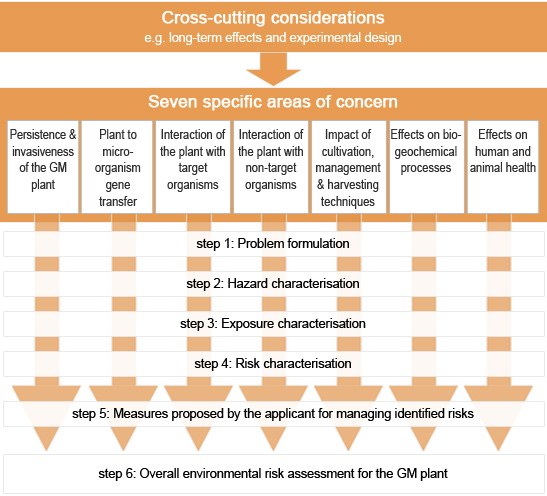
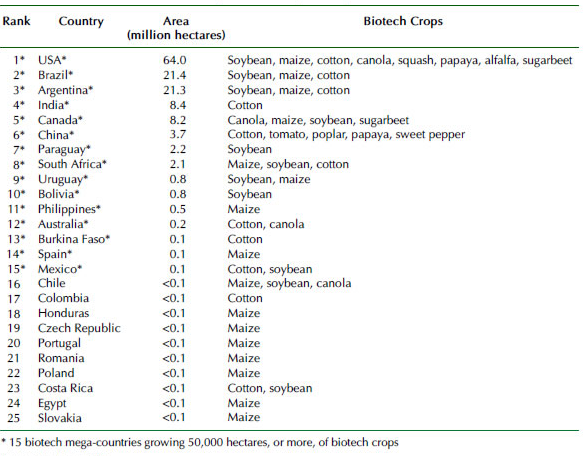
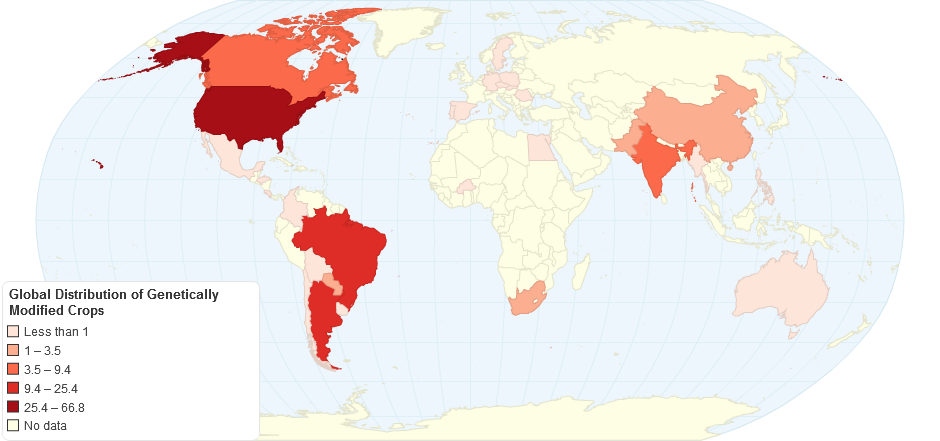
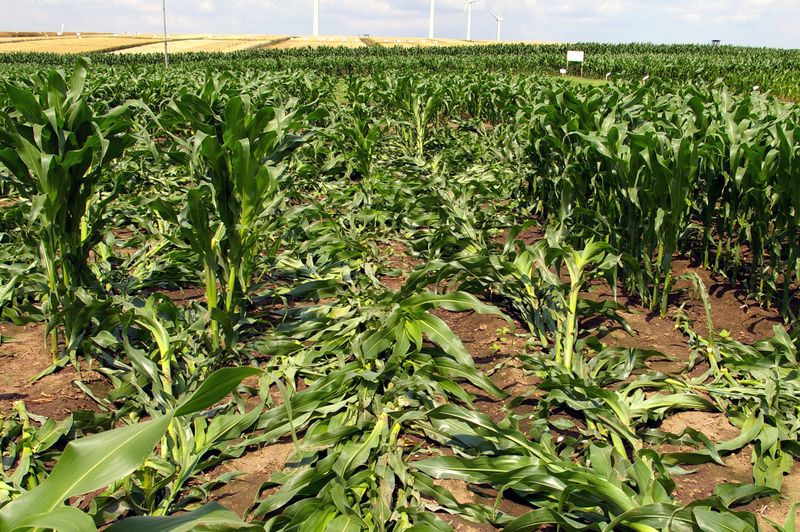
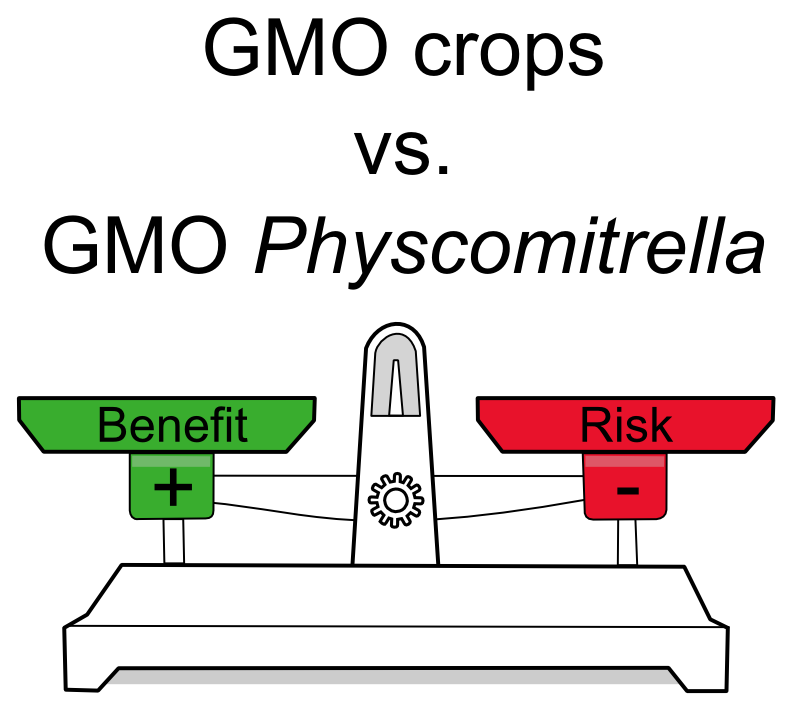
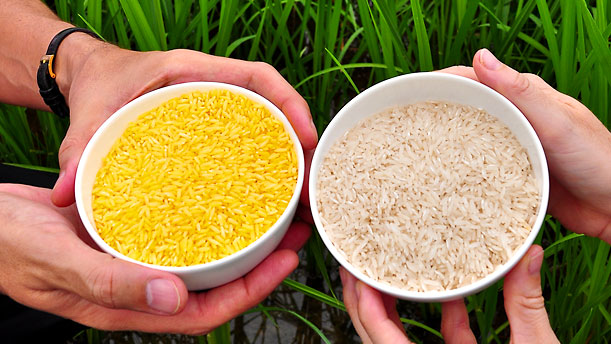
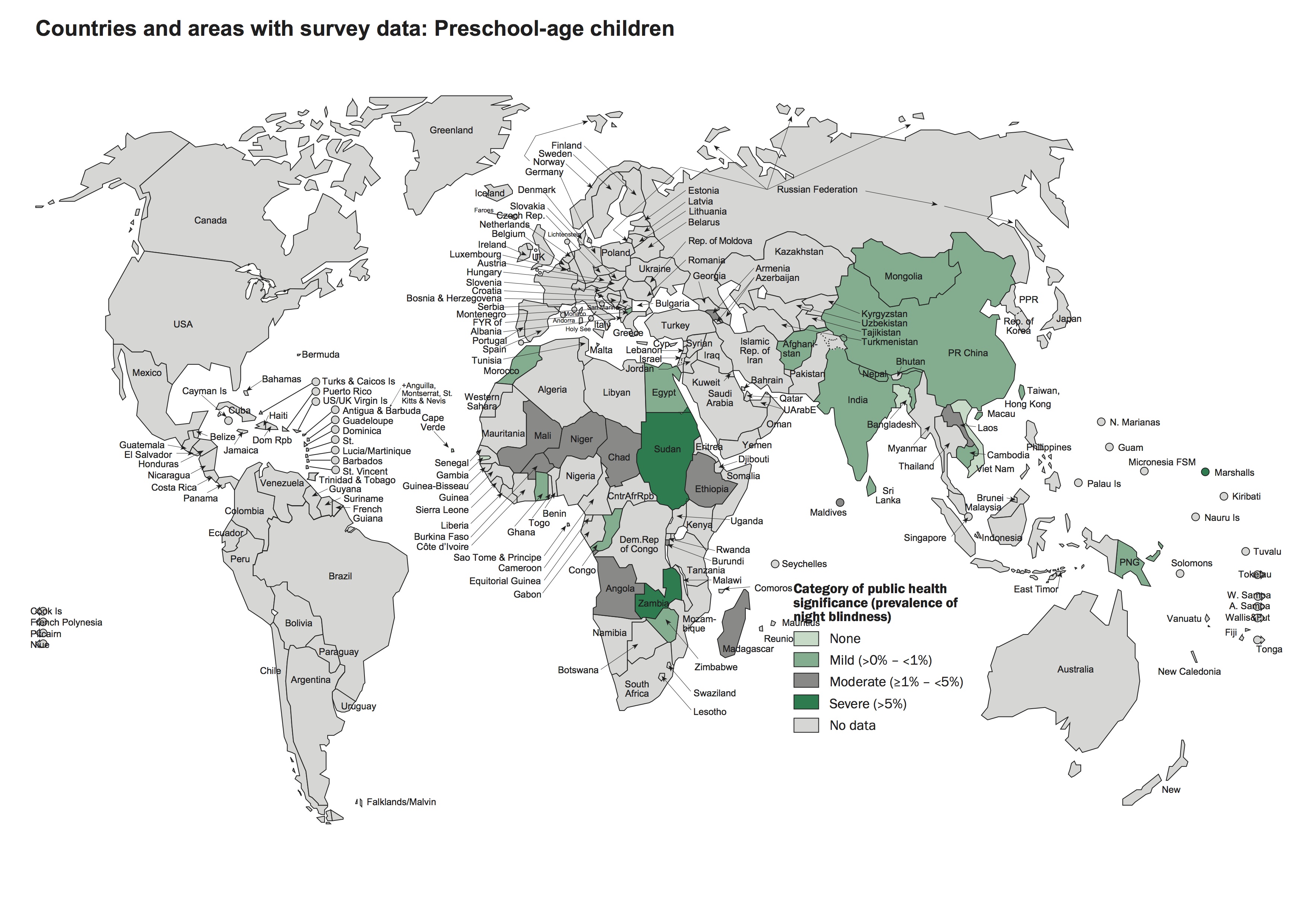
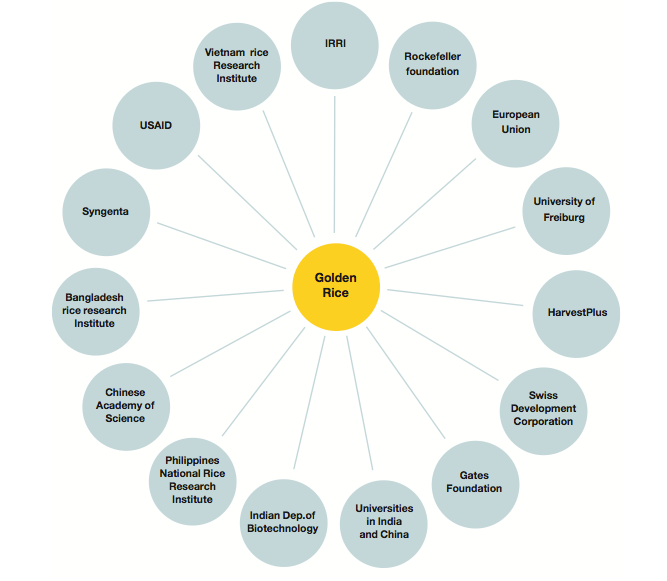
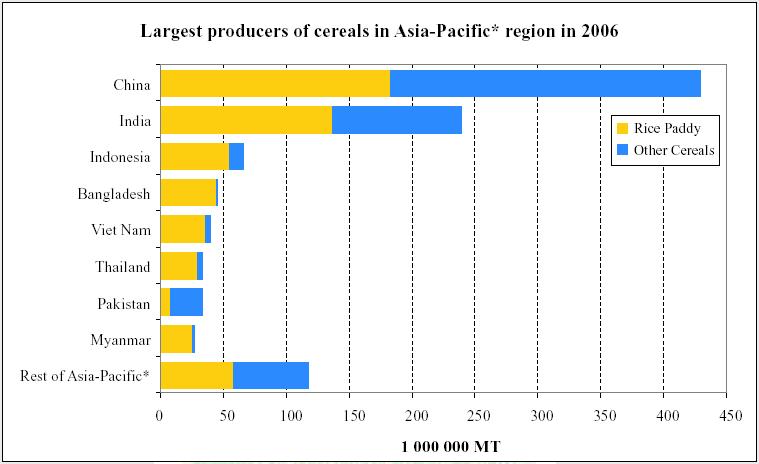
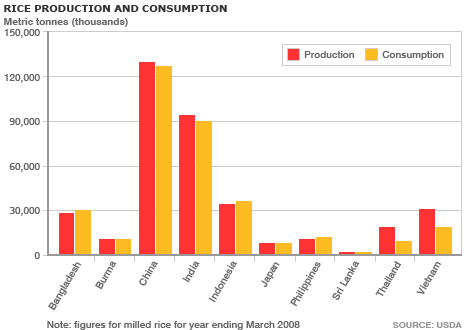
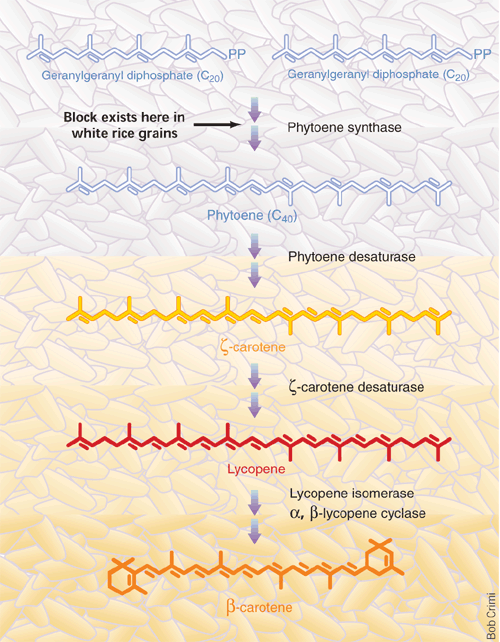
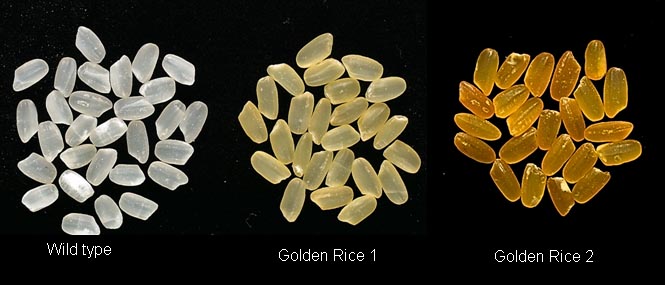
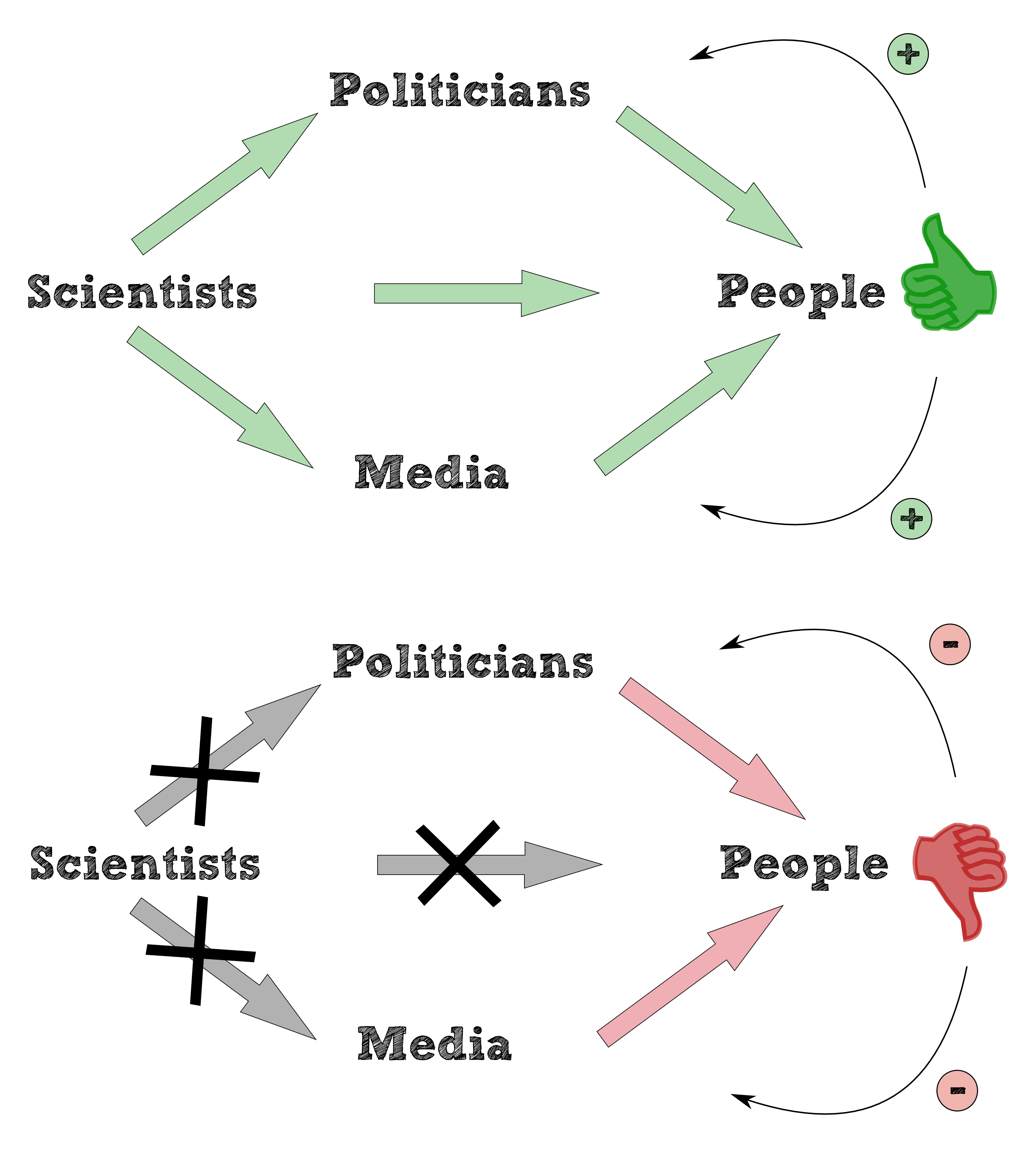
AutoAnnotator:
Follow us:
Address:
iGEM Team TU-Munich
Emil-Erlenmeyer-Forum 5
85354 Freising, Germany
Email: igem@wzw.tum.de
Phone: +49 8161 71-4351